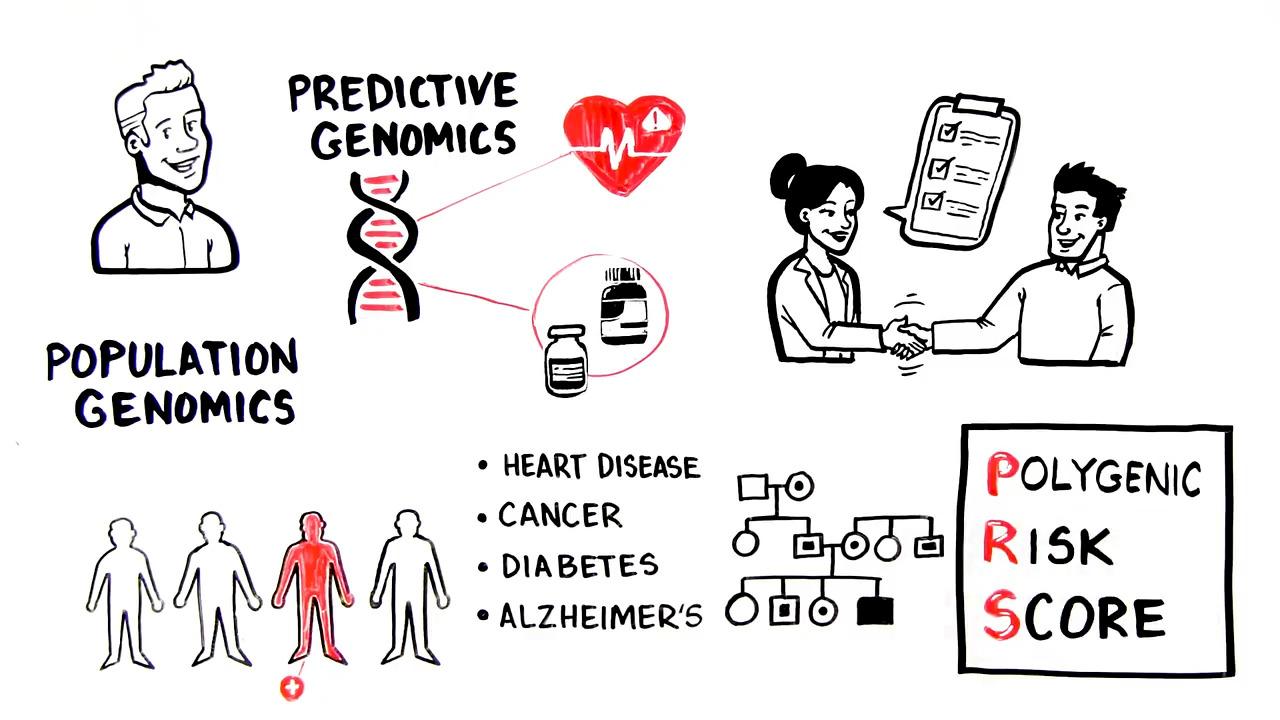Search Thermo Fisher Scientific
Predictive genomics workflow
Population genotyping projects are enabling precision medicine decisions and research, leading to improved health care outcomes. Many national governments and large organizations are investing in scaling up genotyping infrastructure to support personalized solutions.
The Axiom Solution consists of a technology platform that includes assay biochemistry, automated and manual target preparation options, multiple array plate formats, and array processing on the GeneTitan Multi-Channel Instrument. This solution has applications in human genetics research and microbiome research.
The Axiom assay and workflow begins with purified genomic DNA. The first part of the assay and workflow is Target Preparation, which includes whole genome amplification on day one, followed by DNA fragmentation and overnight precipitation on day two. On day three the DNA is resuspended and prepared for hybridization on the array. Finally, washing, ligation, and staining occurs on the GeneTitan instrument followed by scanning of the plate. Target preparation aims to prepare the genomic targets of interest so that they can be successfully attached, or “hybridized” to the synthesized probes on the microarray for accurate results. Following hybridization, array processing involves washing non-specific binding DNA, scanning the microarray plate to detect the fluorescence signal from the genomic targets of interest. Finally, genotypes are reported in Axiom Analysis Suite.
Workflow steps
Let’s dive deeper into each step:
- Whole genome amplification: Since starting genomic DNA is limited and/or finite and typically original crude samples from which the DNA was extracted are also finite or not available, it is important to amplify the limited amount of starting genomic DNA so that there is plenty of DNA, including targets of interest, available to hybridize to the synthesized complimentary probes on the array plate. The Axiom assay requires a total genomic DNA of 200 ng for whole genome amplification. This takes about 24 hours in a 37°C oven.
- Fragmentation: Cut the DNA into fragment sizes that are optimal for array hybridization. If DNA is too long, it may not bind. The Axiom assay utilizes enzymes that randomly fragment into 25 to 125 base pair (bp) fragments.
- Precipitation: Purify and collect all the DNA fragments. Standard is overnight precipitation, but there is an option for a 3-hour precipitation for a quicker turnaround time.
- Hybridization: DNA fragments pair to complimentary probe sequences on the array
- Wash, ligate, stain: The bound target is washed under stringent conditions to remove non-specific background to minimize background noise caused by random ligation events. Each polymorphic nucleotide is queried via a multi-color ligation event carried out on the array surface. After ligation, the arrays are stained and imaged on the GeneTitan Multi-Channel Instrument.
- Scan: detection of fluorescence signal
- Data analysis: primary and secondary analysis. Primary analysis is generation of the genotypes. Secondary analysis includes any analysis of the genotypes to understand groups of samples, genes, variants, etc.
The above steps (excluding data analysis) have been optimized into a shortened two-day workflow, the Axiom Propel Workflow, completing scanning of arrays by the end of day 2. In addition, the Axiom Propel Workflow has been optimized to include benchtop automation to increase the throughput through the workflow as well, processing more plates in two days than the standard manual Axiom 2.0 assay.
Resources
White papers
Video
For Research Use Only. Not for use in diagnostic procedures.
